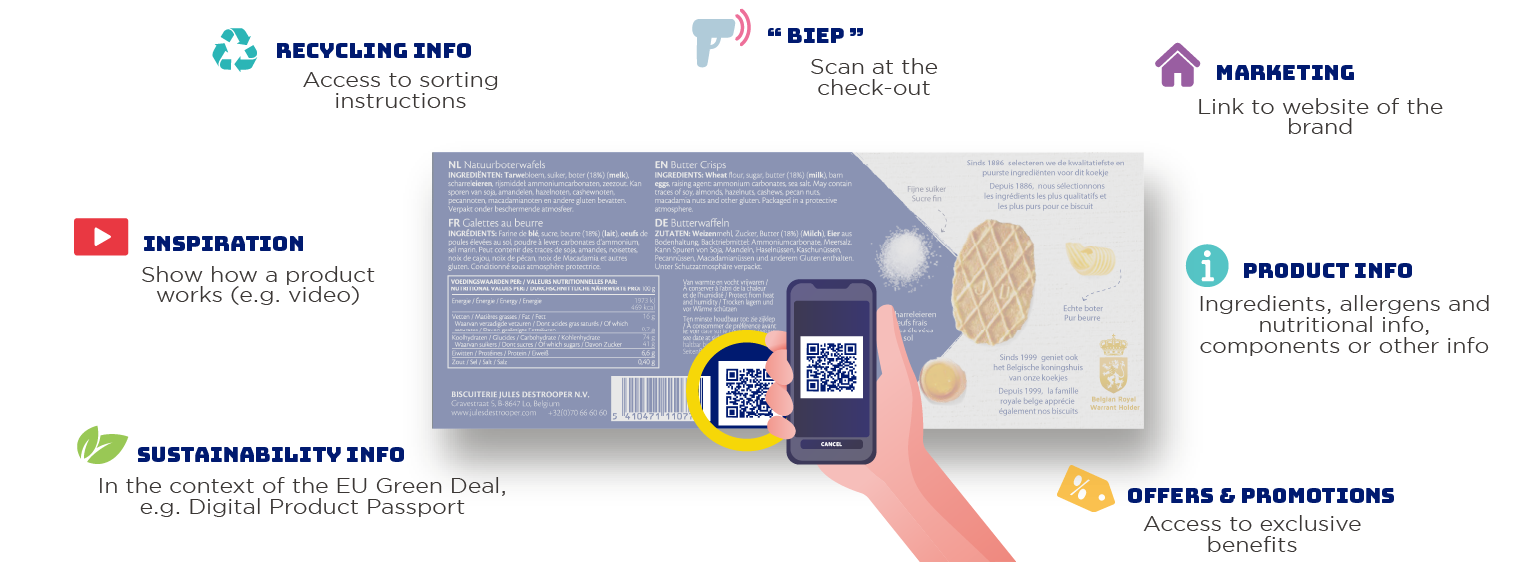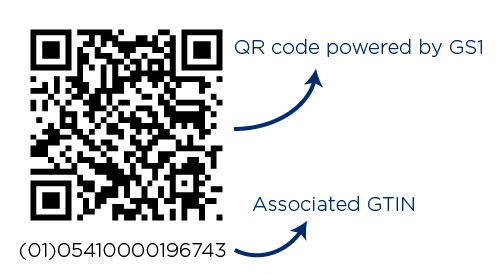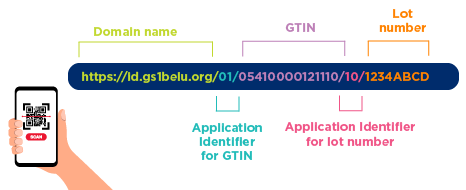And what if your barcode, next to scanning at the check-out, becomes the key to consumer engagement?
Thanks to the QR code and the GS1 Digital Link standard, you can decide which information to show depending on the user – consumer, retailer or even legislator – and depending on the context in which the code is scanned. In addition, the information is adaptable at any time, without having to change the QR code or packaging!

- It beeps at the check-out
- It contains the GTIN
- It complies with legal requirements
- It can contain variable information like lot number or expiration date
- It can be scanned by the consumer

Below you can see how the URL is structured. This new QR code with GS1 Digital Link can easily be created and downloaded in My Product Manager.



